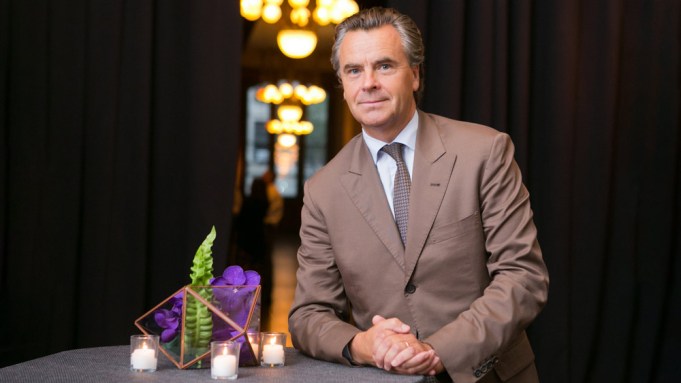The 31st edition of the venerable European Fine Art Fair (TEFAF) opens later this week in the southern Dutch city of Maastricht. The vetted event is known for bringing to light the rare and fresh, as well as new discoveries for those in search of the next Salvator Mundi. This year, the fair, which runs March 10 through 18, will have not one but two VIP preview days on March 8 and 9. Robb Report recently caught up with TEFAF CEO Patrick van Maris for an insider look at the fair ahead of its vernissage.
As the fair enters its fourth decade, will there be any significant changes to this year’s event?
We are always seeking to improve the visitor experience at the fair. This year, we have tweaked the floorplan so as to improve sightlines and aid in visitor flow. The entrance hall will feature a new design by fair architect Tom Postma. We are also welcoming a number of new exhibitors. Notable additions to the TEFAF Modern section include Emmanuel Perrotin, Massimo de Carlo, Mazzoleni, M&L Fine Art, and Leon Tovar Gallery. TEFAF Design continues to expand with the addition of Galerie Jousse Enterprise, Oscar Graf (who was part of our TEFAF Showcase 2 years ago), Galerie Marc Heiremans, and Thomas Fritsch. We also look forward to welcoming Galerie Chenel and Safani Gallery (TEFAF Ancient Art); S. Franses and Walter Padovani (TEFAF Antiques); Glenn Spiro (TEFAF Haute Joaillerie); Galerie de la Presidence and Galerie Zlotowski (TEFAF Paper); and Lullo Pampoulides (TEFAF Paintings), who participated in TEFAF Showcase last year.
Are there dealer presentations you are particularly excited about this year?
A number of dealers—including Hemmerle, Vanderven, and Epoch Fine Jewels—are celebrating anniversaries of their businesses this year and I know are planning some very special exhibitions. London–based old-masters dealer Richard Green has created a themed room devoted to the Dutch Golden Age.
Has the launch of the Spring and Fall New York editions of TEFAF shaped your thinking on the Maastricht fair and its ability to entice American collectors to journey to the Netherlands?
North America is clearly the most important market within the global art market and by launching fairs in New York, we have strengthened the TEFAF brand in the art market capital in particular and within the United States more generally. This can only be a good thing and we certainly expect to see increased interest from American buyers.
TEFAF recently embarked on a new partnership with the City of Maastricht to renovate and expand the Maastricht Exhibition & Congress Centre. Might you tell us about that?
MECC has committed more than €30 million ($37 million) to modernize the venue and TEFAF was instrumental in the consultation process to determine the best way to enhance and expand the space. Some of the changes are already evident. One of TEFAF’s wishes was a better connection between the main fair floor and the TEFAF Paper section, on an upper floor. The staircase leading to this part of the fair has been completely renewed. The upper hall is now clearly visible from the ground floor as the facade between both sections is partly opened up and partly replaced by glass facades. To improve access, two lifts were also installed last year. For this edition, the parking area in front of the main entrance has been upgraded with the addition of a tree-lined boulevard and also practical improvements, such as charging stations for electric cars, a new taxi ramp, and facilities to use the terrain for additional exhibition space in the future. These upgrades offer a better first impression of the venue.
The major part of the renovation will begin in mid-2019 and is to be completed before TEFAF 2021. Changes include an extension of the conference center, and the wrapping of the building in a modern glass façade. In addition to expanding the exhibition floor space, the new part of the building will house a restaurant. The two current entrances of the MECC will get a facelift, including the installation of large LED screens, the square in front of the hotel and restaurant will be completely renewed, and the existing restaurant on the first floor of the venue will get a connection directly into the exhibition halls. Beyond the exhibition center, the City of Maastricht and the Province of Limburg are also investing to improve accessibility to the city and the hotel facilities within the city.
TEFAF recently acquired an 18th-century building on the main square of the historic city. How will that be used?
We are very excited to have a building in Maastricht, and at the moment, we are exploring how we might best use it. Having a permanent presence in the city affords an opportunity to create cultural and educational programs to coincide with not only the March fair but throughout the year.


